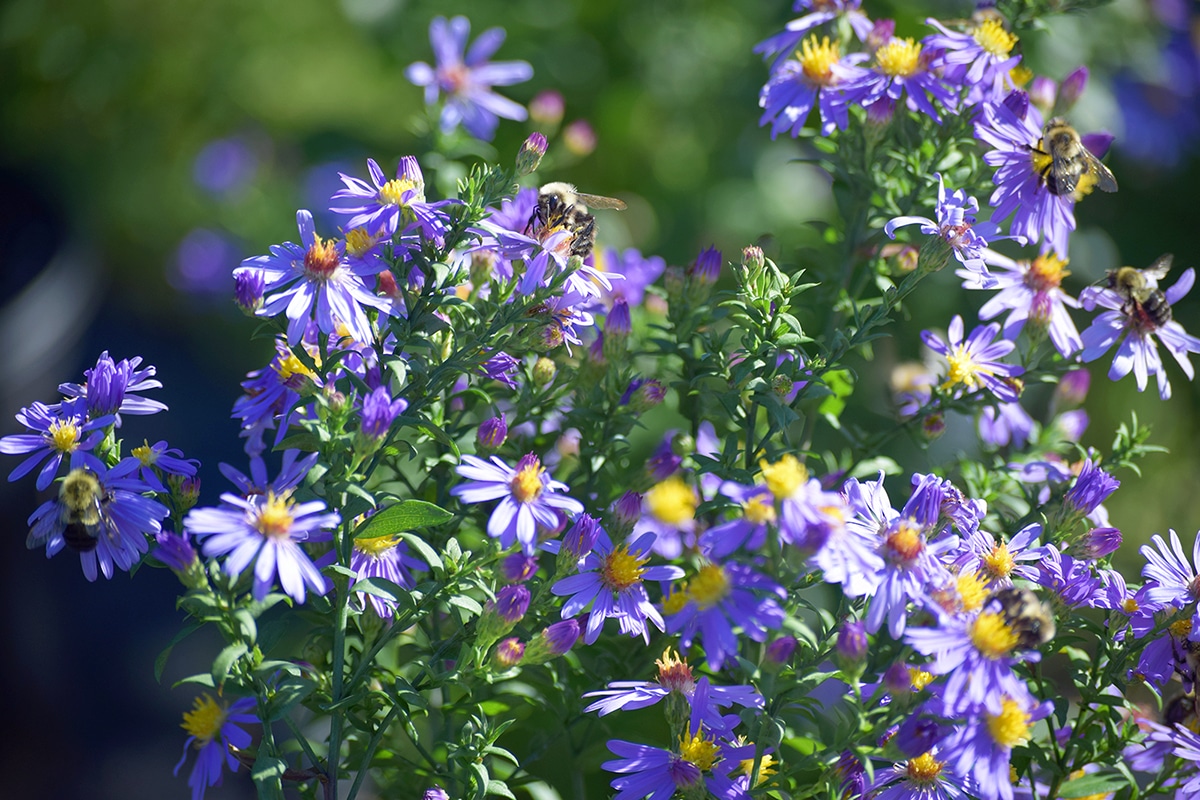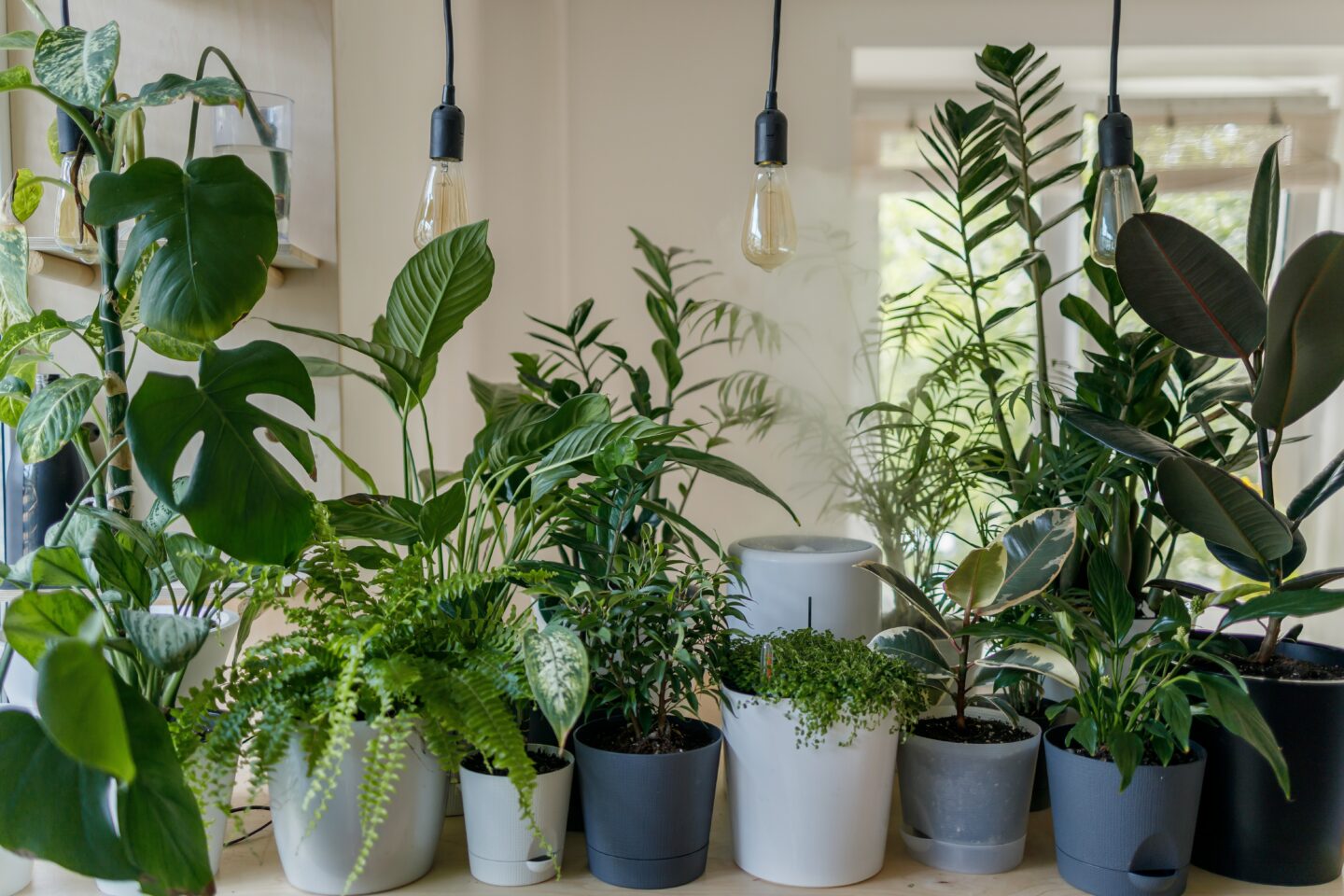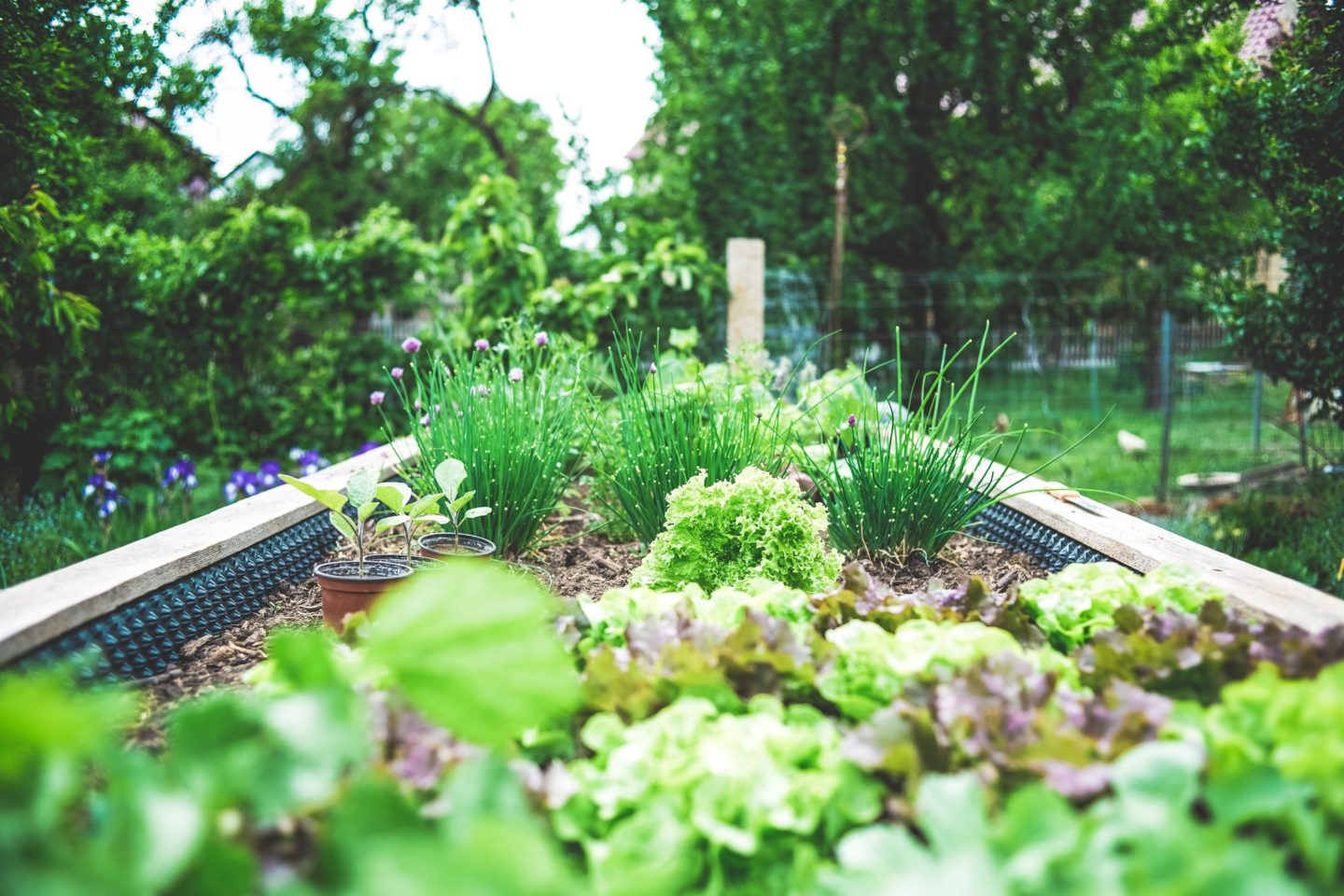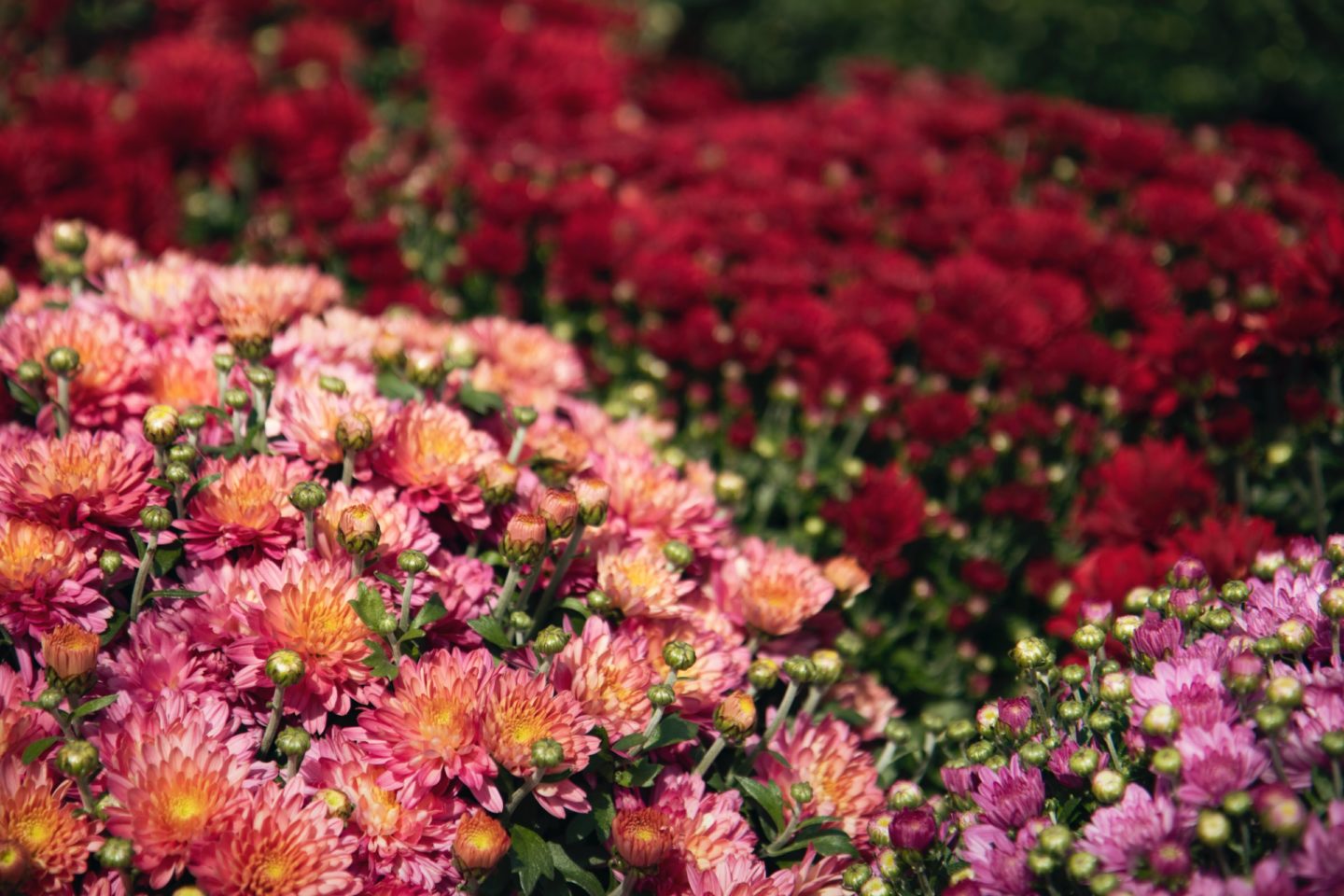Although it’s important to plant habitat and nectar-rich plants for pollinators throughout the season, early spring and late fall are often the most important for bees and butterflies. In the late season garden, it’s vital to have plenty of flowering options for migrating Monarchs who are on the journey to Mexico, hummingbirds heading south, and bees trying to gather enough food to sustain themselves through the winter months. We’ll talk about easy-to-grow native and non-native varieties that you can add to your garden here in Vermont to help these pollinators in the late season.
Aster: Aster is one of the best late-season plants you can add to your landscape for pollinators. It’s native, easy-to-grow here in Vermont, winters over readily, and provides dependable color from September all the way through frost.
Verbena: This annual is a great source of nectar for hummingbirds and other pollinators. You can find it at most local garden centers in Vermont and if you deadhead and water regularly, it will keep blooming through frost. Add it to containers or in the garden bed for long-lasting color and a late-season food source for pollinators.
Sedum: Sedum offers up interest all season long with unique foliage and the blooms begin to open in September until frost. Bees can’t get enough of this perennial and it is a great nectar source for a variety of pollinators.

Mexican Sunflower: Also known as Tithonia, this fiery annual can be easily grown from seed or picked up as a starter plant at your local nursery. If planted in spring, it starts to bloom in the late season and if deadheaded will continue to bloom until frost. A favorite of butterflies, bees, and hummingbirds.
Zinnia: Zinnia is one of the best annual varieties to plant for pollinators. It starts to bloom in summer and with proper deadheading will last all the way through frost, attracting a menagerie of bees, butterflies, and other pollinators to the garden. Extremely easy to grow from seed or starter plants from your local nursery.
Basil: If you’re the kind of gardener that likes to plant swaths of basil, consider letting some go to flower in the late season! These flowers are a great late-season source of food for pollinators.
Ornamental Grasses: Ornamental Grasses are a great source of habitat for birds and other pollinators throughout the winter. Keep your grasses up (don’t cut them down in fall!) for added height, interest, and to help birds with shelter throughout the winter months.

Echinacea: There are certain types of Echinacea varieties that last through the late summer and into fall, which provide an important food source for pollinators. Another great way to provide habitat and shelter for birds throughout the winter is to leave your Echinacea up through the colder months and cut them down in early spring.
Goldenrod: Also known as Solidago, this easy-to-grow perennial is an especially important source of nectar for honeybees in the late season garden. Other bees use the pollen to create nests and butterflies are also attracted to Goldenrod. As it readily spreads, plant Solidago where you can keep an eye on it and easily thin out plants each season.
As more and more gardeners are realizing the importance of adding pollinator-friendly plants to their gardens, many nurseries are following suit and making sure they clearly label these plants. When possible, try to purchase neonicotinoid-free plants and seeds to help give pollinators healthy plants to feed on.



